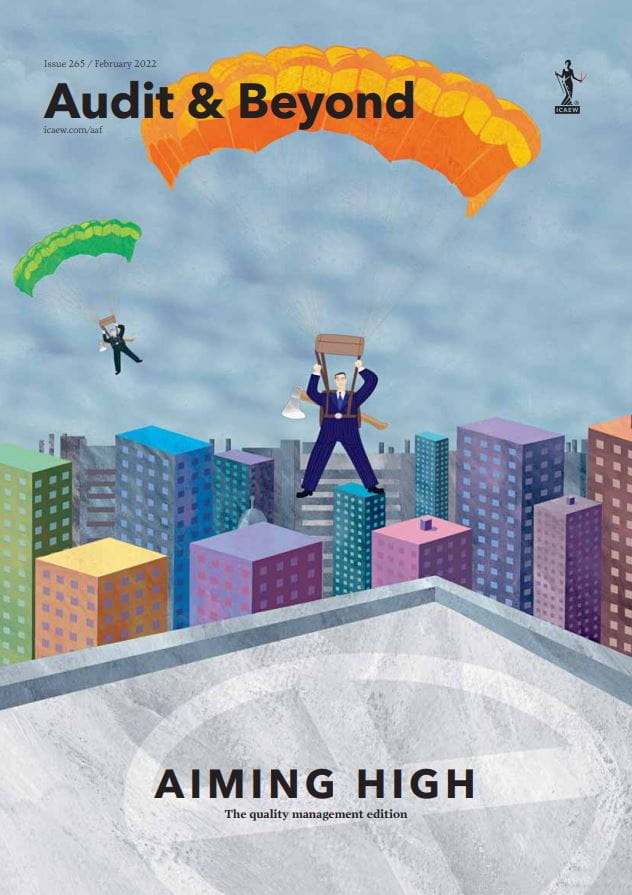While most of the focus of recent webinars and articles has been on ISQM 1, we should not forget about ISQM 2. It addresses Engagement Quality Reviews (EQRs) (note ‘control’ has been dropped from extant ISQC 1) and covers the appointment and eligibility of the reviewer and the reviewer’s responsibilities. It attempts to “clarify and strengthen aspects of extant standards [ISQC 1, ISA 220] for a more robust EQ Review”.
The main changes are:
- extended scope of engagements subject to EQR;
- enhanced eligibility criteria for Engagement Quality Reviewers; and
- more robust performance and documentation requirements.
Extended scope
EQRs now apply to:
- audits of financial statements of listed entities;
- audits or other engagements for which an EQR is required by local law or regulation; and
- audits or other engagements for which the firm determines that an EQR is an appropriate response to address one or more quality risks.
“Engagements for which the firm determines that an EQR is an appropriate response…” is interesting. I suspect many firms probably have some sort of policy already in place, as required by the earlier standard (ISQC 1, para 35(b)). By writing it into ISQM 2, standard setters underline that it is a legitimate firm-level response to risk and perhaps also an expectation that a firm considers it as an option more often than it has done in the past.
A firm might like to consider whether the nature of their client base warrants a firm-wide policy to require an EQR for certain types of entity, sector, experience of the audit team or a combination. For example, an EQR for new partners to financial services audits or for entity borrowings in excess of a certain amount. In the absence of a firm-wide policy requiring an EQR, it is still a legitimate response to certain types of risk identified at client take-on.
Enhanced eligibility criteria
These include:
- a cooling-off period of at least two years before the engagement partner can become the EQ Reviewer (and comply with other relevant provisions of law/regulation/ethical requirements); and
- the EQ Reviewer should have appropriate competence, capabilities, time and authority.
ISQM 2 is explicit that the firm can make use of EQ Reviewers from outside the firm – from within or outside their network. The EQ Reviewer can use assistants and would determine the nature, timing and extent of the direction and supervision of assistants, and the review of their work.
Performance and documentation requirements
The intention is to “focus on the objective evaluation of the significant judgments made by the engagement team and the conclusions reached thereon”. The EQR is conducted at appropriate points in time – not just at the end, but as appropriate throughout planning, performing and reporting. The EQ Reviewer must ensure professional scepticism. There is also a ‘stand-back’ requirement to assess whether the performance requirements of ISQM 2 have been fulfilled.
WARNING: The engagement partner cannot date the audit report until the EQ Reviewer says: “My review is complete.”
The firm will need policies on EQ Reviewer responsibilities and (minimum) engagement documentation to be reviewed by the EQ Reviewer. Examples of areas where EQ Reviewers are likely to want to document their considerations include:
- where the audit team exercises judgement on the relative weight of different sources of audit evidence in support of a material judgement;
- where audit team and management views differ on a material estimate;
- planning for difficult-to-audit areas;
- audit work on a material area that significantly differs to the planned approach; and
- demonstrating professional scepticism where material judgements tend to side with views of management.
From discussions with others, I think many agree that ISQM 2 largely codifies what was already good practice. So, my advice would be to follow the ISQM 2 basics: support proactive EQRs and promote the EQ Reviewer role as challenging, rewarding and highly valuable, and audit quality should hopefully shine through.
About the author
Nick Jeffrey, Director of Professional Standards, Baker Tilly International
Audit & Beyond
This article was first featured in the February 2022 edition of Audit & Beyond.
